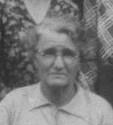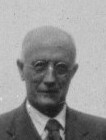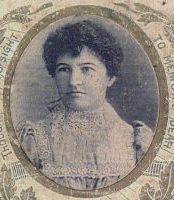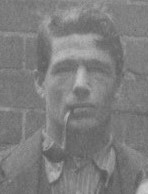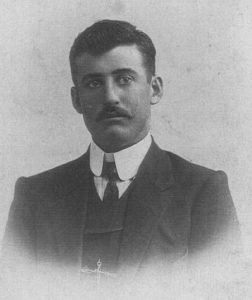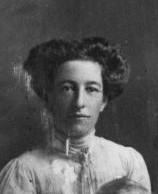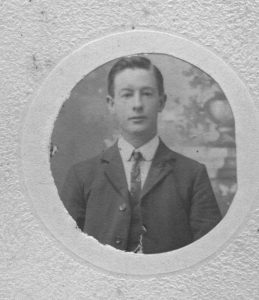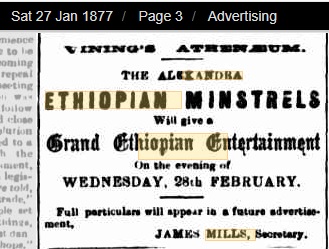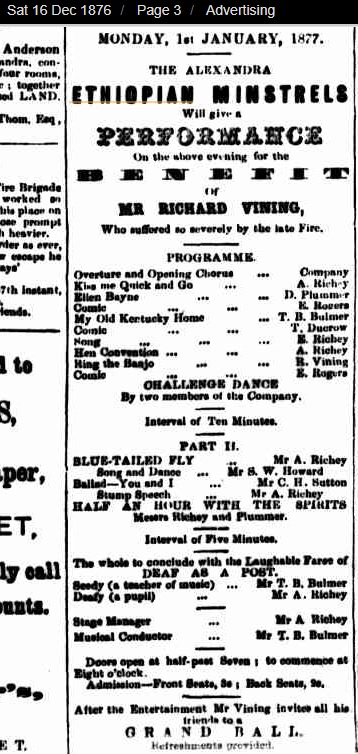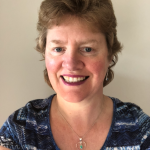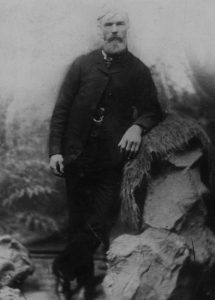
James Henry Mills
James Henry Mills was born in December 1838 in Hobart, Tasmania in the Cascades Female Factory, the son of Scottish convict Susannah Mill (Susan Mills) 1815-1849.
Susanna Mill was convicted at the Perth Court of Justiciary in Scotland for a term of 7 years on 04 October 1836. She was transported to Van Diemens Land on the ‘Atwick’ departing Britain on 28 September 1837.
On Susan’s convict record it states she was staying in the house of ‘a man called Yates’, when she was about 5 months pregnant. She was then sent to the Cascades Female Factory in Hobart as punishment. (So Mr Yates could possibly be James’ biological father. A Mr H Yates was a carpenter and grocer in Macquarie Street, Hobart in the 1828 Tasmanian Almanack.)
Her son James was admitted to the Queens Orphanage at Newtown on 8 March 1841, aged 2 years and 3 months (originally placed with the girls), before being transferred to the boys section at the Kings Orphan School. (Library of Tasmania Archives SWD 7).
His mother Susan married a convict named Joseph Pooler, a carpenter born in Birmingham, England, (arrived Hobart aboard the ‘Clyde’ in 1830) on 17 August 1842 in Avoca, Tasmania. Joseph and Susan had a child together Joseph Edward Pooler on 10 November 1842 at Waterloo Point, Great Swan Port, Tasmania.
In January 1844 James was discharged from the orphanage and the records state he was ‘delivered to his mother’. Sadly a few years later when he was 10 years old his mother Susan died in Hobart on 30 August 1849 at the age of just 34 years old (inflammation of the lungs). They were residing at Murray Street in Hobart at the time of her death.
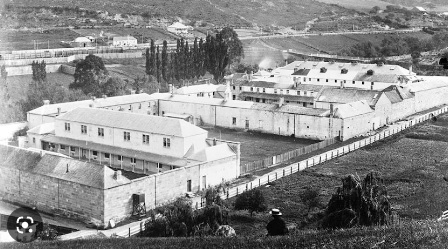
Cascade Female Factory Hobart
Joseph Pooler, James’ stepfather, died at the age of 58 years on 29 May 1866 in Hobart (phthisis pulmonatis or TB). Joseph had previously made a trip over to Victoria where he was found on a ship’s passenger list on 20 September 1853 from Launceston to Geelong aboard the ‘Pirate’. It is unknown if James Mills was with him for the journey.
It is unknown when James left Tasmania, and settled in Victoria. His step brother Joseph Edward Pooler 1842-1915, also departed Tasmania and settled in New South Wales, and married in Forbes in 1878 to Martha Feldmann. Joseph Pooler junior resided in New South Wales until his death at Lake Cargelligo, on 27 October 1915 aged 72. He had a family of five children – Ada, Matilda, Frank, Martha and Edward.
Several DNA connections have been found between the children of Joseph Edward Pooler, and descendants of James Henry Mills, confirming they were indeed stepbrothers and descended from Susannah Mill, the convict from Aberdeen, Scotland.
We do know the two brothers kept in touch, and Joseph Pooler’s descendants had the same portrait photograph (pictured above) of James Mills handed down through their family. They also had a birthday book with dates of James’ family in it.
One of James’ sons Henry James Mills 1875-1957 lived in Tottenham, NSW, working as a storekeeper. His wife May Mathewson and her family lived in the same town as Joseph Edward Pooler’s family at Lake Cargelligo, NSW.
James Mills was first known of on the mainland of Australia working in Ballarat as a butcher on the goldfields sometime before 1870. Gold was discovered in Ballarat in 1851, sparking Victoria’s famous goldrush. An estimated 6000 diggers (miners) arrived each week seeking their fortune. Ballarat was considered the world’s richest alluvial goldfield during its peak between 1852 and 1853.
The Vandemonians (Tasmanians) were the first to rush to the goldfields of Victoria when word got out. About half of the convicts in Tasmania, left the colony to make their fortune to find the precious metal. 30,000 of them sailed across Bass Strait to Melbourne. Many of the convicts remained out of sight in the bush and worked as splitters, hawkers, bush workers and married into other ex-convict families. Many went on to live a good life in respectable society hiding their convict stains and living a life of secrets and lies.
James was one of them. In 1890 on his marriage & death certificates (likely told to the family by James) the information gives his father as James Mills (not true!) and his mother as Susan Smith (hiding his illegitimacy) and his birthplace as Essex, England (instead of in a convict female factory). It seems only his occupation of butcher was the truth!
James Mills does not appear in the Ballarat Directory of 1856 or 1869 or the Victorian Post Office Directory of 1866.
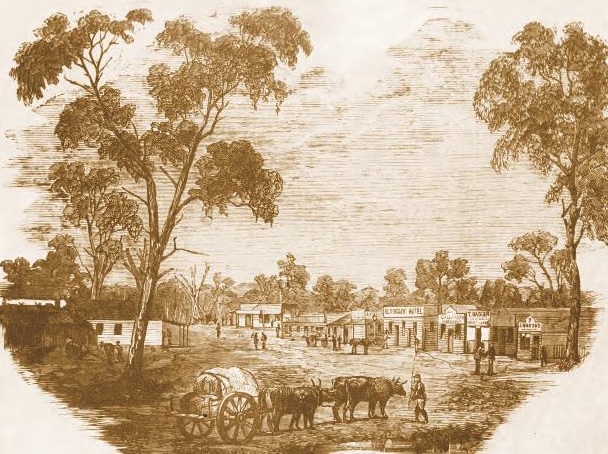
Alexandra 1867 – Illustrated Australian News
Sometime later he travelled 220 kms to the town of Alexandra in north east Victoria. Gold mining was the catalyst for the development of the town of Alexandra with many mines around Alexandra and particularly along Ultima Thule Creek, known locally as UT Creek, which runs through the town. The town’s post office was opened there in 1867.
On 26 August 1870 at St Johns Anglican church in Alexandra, Victoria James Henry Mills married Elizabeth Heasman.
James stated he was born in Macclesfield, Yorkshire (a lie to cover up his convict ancestry) and that he was a 31 year old butcher from Ballarat, now residing in Alexandra. He gave his parents names as James Henry Mills, a sailor and Susan Smith (only his mother’s Christian name was correct).
Elizabeth Heasman stated she was born in Hartfield, Sussex, England and that she was a
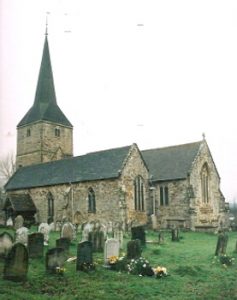
St Mary Hartfield Sussex
30 year old spinster from Gobur, near Alexandra. Her parents are Edward and Sarah Heasman, a labourer. She was one of eleven children.
Elizabeth was born in Hartfield, Sussex in 1837, and was baptised there at St Marys, Hartfield on 10 September 1837.
Four years later, Elizabeth aged 3 appears in the Hartfield Census living in Posh House Farm with her parents Edward, an agricultural labourer, mother Sarah and siblings Sarah, Lucy, James, Edward, John and Hannah.
In 1851 Elizabeth is living at New Cottage, Hartfield where her father is still working as an agricultural labourer, and she is now 13 living with her parents and siblings Lucy, Ann, Hannah, Susan, Emily and Ruth.
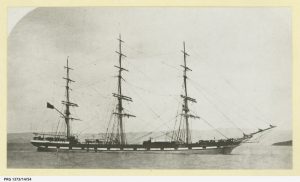
“Morayshire” passenger ship
The Heasman family immigrated to Australia on the “Morayshire” passenger ship arriving in Sydney, Australia on 20 September 1856.
They settled in the Illawarra area and sometime later made their way down to Alexandra, Victoria, where Elizabeth married James Mills in 1870.
Unfortunately the following year Elizabeth died in childbirth of haemorrhage. She died on 21 April 1871 and was buried in the Alexandra Cemetery on 23rd. Her daughter Mary also didn’t survive the birth and was also buried at Alexandra on the same day.
On 18th June 1872 at St Johns Church in Alexandra, James married again.
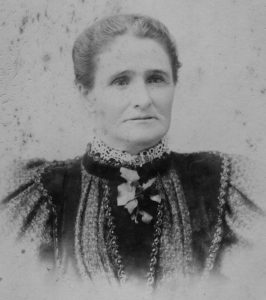
Frances Ellen Richey
Now he states he was 32 and that his present residence is still Ballarat, but he was currently at Alexandra.
He marries 19 year old Frances Ellen Richey of Gobur, daughter of Henry Richey (1817-1871), and Jane Chapman (1818-1861). Dublin born Henry was a commercial traveller.
James states he was widowed on 20 April 1871, and he was from Macclesfield, Yorkshire and his father was James Henry Smith, a seaman, and his mother was Susan Smith (another lie about his birthplace and parents names to cover up his convict ancestry).
Frances Ellen Richey was born on 7 March 1851 at 11 Everilda Street, Islington West, London to Irish father Henry Richey (1817-1871), a commercial traveller, and mother Jane Chapman (1818-1861).
In 1851 baby Frances is living at 15 Belitha Terrace in Islington, London with her parents Henry and Jane, and siblings Margaret, Jane, Arthur, Sarah, Susan, and Henry.
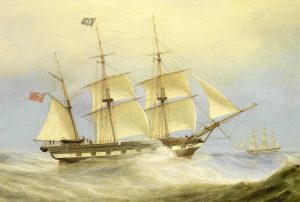
“Hanover” build in 1826
Only a couple of years later the family left London and arrived in Port Phillip Bay, Melbourne, Australia on 11 September 1853 aboard the passenger ship “Hanover”.
Aboard the ship were Henry 36 and Jane 35, Margaret 14, Jane 12, Sarah 8, Susan 5, Frances 1, Arthur and Henry.
Also travelling with the family were two of her uncles Andrew and Rev Edward Richey. Unfortunately Andrew died at sea.
The Richey family initially went to the Bendigo goldfields (Sandhurst) where Frances brother Edward was born. Her father Henry Richey tried his luck as a wine merchant. They then moved to Maryborough, where Henry had a store on the gold diggings near Maryborough at Chinaman’s flat.
They then moved to Ararat and then in 1861 they moved over to Ghin Ghin (near Yea) and by 1868 they were living at Woods Point. By 1868 Frances had moved with her family to Alexandra where her father and brothers and sons had a newsagency. Her father Henry died in Gobur in 1871, just 26 kilometres from Alexandra.
And Gobur was where James Mills was a butcher in 1874, so I’m guessing that’s how they met.
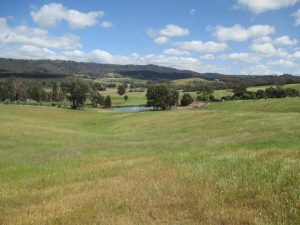
Gobur, Victoria
Gobur was a tiny Victorian farming locality and village, 97km north east of Melbourne. In 1868 gold was discovered in Godfrey’s Creek, Gobur. The following year, when 650 miners were estimated to be on the goldfield, a primary school was opened.
Within another year the township had about 30 buildings, and about 20 buildings served as hotels throughout the mining area. A mining registrar was located in the township along with a post office and police barracks.
By 1870 gold mining had passed its peak, but steady outputs continued until the 1880s. Several wooden business premises were lost by fire, and in 1886 only one general store was trading. However, stock grazing added to the local economy and a mechanics’ institute hall was opened in 1888.
James, by occupation was a butcher, and he applied for and was granted a slaughtering license in Gobur (near Alexandra) on 10 January 1874. The population of Gobur at the time was 221.
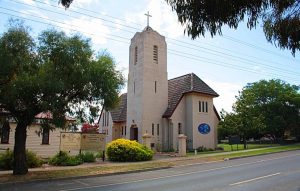
St Johns Anglican Church Alexandra
On 18th June 1872 at St Johns Church in Alexandra, James Mills married Frances Richey.
The witnesses to the marriage were Frances’ two siblings – Arthur and Sarah Richey.
James and Frances Mills had nine children-
- 1874 Susan b Alexandra d 1947 Thornbury married William Knight
- 1875 Henry b Alexandra d 1957 Sydney married May Mathewson
- 1877 Jane b Mansfield d 1878 Alexandra
- 1879 Margarete b Mansfield d 1904 Collingwood married George Willis
- 1880 James b Mansfield 1906 Alexandra
- 1882 Edward b 1882 Longwood d 1945 Preston married Margaret Cooper
- 1884 Ernest b Euroa d 1955 Wonthaggi married Eliza Hutton
- 1886 Emily b Euroa d 1915 Bairnsdale married George Nilsson
- 1889 Arthur b Yea d 1911 Broken Hill, NSW
- Susan Mills
- Henry Mills
- Margarete Mills
- Edward Mills
- Ernest Mills
- Emily Mills
- Arthur Mills
It seems James has teamed up with two of his wife Frances’ brother Arthur and Edward Richey and formed a group called the “Ethiopian Minstrells”. The group, among others perform around the Alexandra area with comic singing and dancing. Several advertisements appear in the paper from 1871 to 1877 announcing their concerts.
A letter appears in the newspaper talking about the now defunct club comprising only of James Mills, Arthur and Edward Richey.
- James Mills 1876
- Ethiopian Minstrells Mills and Richey 1876 Alexandra
James appears in the local Alexandra newspaper again in May 1877, when his young two year old son Henry James Mills had a narrow escape through eating poisonous fungus in mistake for mushrooms on Wednesday last. The child was seized with convulsions, which lasted two or three hours. Luckily he recovered.
In February 1878 James was appearing as a witness in a police case of cattle impounding. He states he is working as a butcher for Mr Harker of Alexandra.
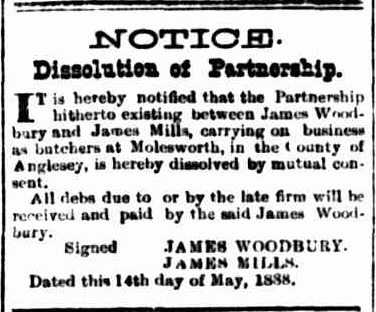
Alexandra and Yea Standard Newspaper 1888
10 years later in 1888 James has been working as a butcher in the nearby town of Molesworth with partner James Woodbury. Molesworth is just 18 kms down the road towards Melbourne from Alexandra, and 13kms east of Yea.
On 18th May 1888 a Notice of Dissolution of Partnership was placed in the local newspaper informing the public that James Mills and James Woodbury had ceased their business by mutual consent.
The same newspaper once again mentioned this business in its 6th July 1888 issue with the agent stating “I sold during the month the butchering business of Messrs Woodbury and Mills at Molesworth” in the Alexandra Stockmarket Report section.
Molesworth is described on the Victorian Places website – The township was surveyed in 1864 and a store with a post office was there by 1875. The primary school was opened in 1880. The railway was extended from Yea to Molesworth in 1889, at about the time a sawmill and a butcher were added to the township. Ten years later the Anglican church was opened. The railway reached the town in 1890. In 1901 the population was just 63.
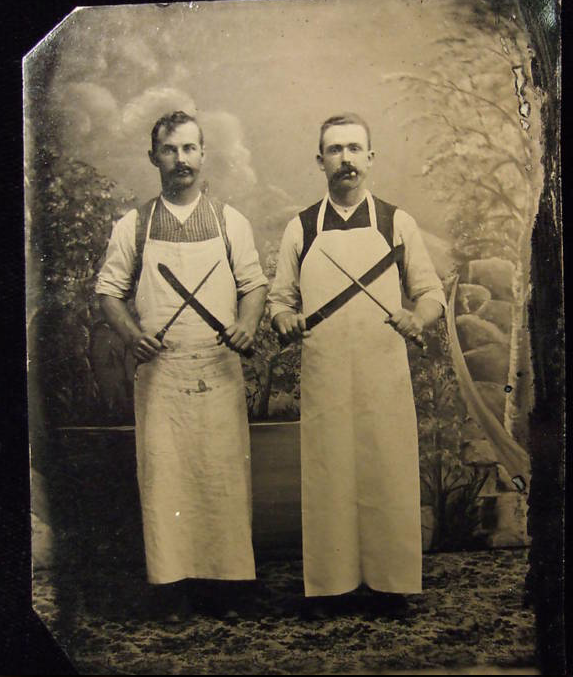
19th century butchers – names unknown
But, it was not as clear cut as those first two announcements appeared. The Public Record Office of Victoria has records of a Civil Case between Sampson vs Woodbury & Mills in September of that year.
Once again the local newspaper gave full details of the case, and it appears that Mrs Mills had tried to stop the sale going ahead as her husband was seriously ill. Dr Lethridge deposed that James Mills was in hospital with pneumonia. Unfortunately for James, the sale went ahead anyway, and James Mills family were ordered to pay court costs.
Sadly James died of pneumonia on 15 November 1889 in Alexandra aged only 52. His death notice states he was an old resident of over 20 years standing, and succumbed to the prevailing epidemic of influenza, leaving a widow and very large family in destitute circumstances. Mr Lipscombe is kindly exerting himself to relieve the immediate necessities of the family, and calls forth the utmost aid of all residences.
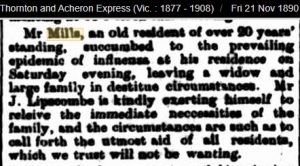
Alexandra and Yea Standard 1890
His wife Frances was left with eight children ranging in ages from 17 to 2 to care for.
There are several newspaper advertisements in the Alexandra newspaper appealing for charitable help for the family regarding their subsequent destitution after the death of James.
An astonishing number of people gave money to help the family and they are all listed along with ‘subscription’ in aid of the ‘widow and family left in very straitened circumstances’.
Frances places a final advertisement thanking the community for their generosity.
James Mills is buried in the Alexandra Cemetery in 1889 with no headstone.
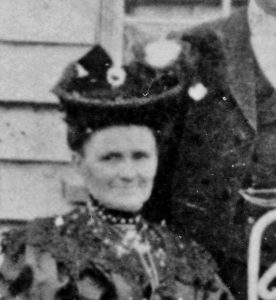
Frances Mills in 1907
According to the Victorian Electoral Roll, Frances is still living in Alexandra in 1909 with her unmarried 27 year old son Edward. He got married in 1912 to Margaret Cooper down in Clifton Hill, Melbourne.
She is still living in Alexandra and appears in the 1911 Sands Country Directory as the only Mills in town.
Frances died on 6 November 1913 at 40 Francis Street in Collingwood of endocarditis aged 62 years. She was buried in the Coburg Cemetery on 7 November.
Her son Edward paid for the burial plot and arranged the Certificate of Right of Burial for CofE, Grave no 475B Compartment 3B.
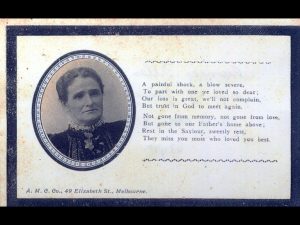
Funeral card of Frances Ellen Mills nee Richey

